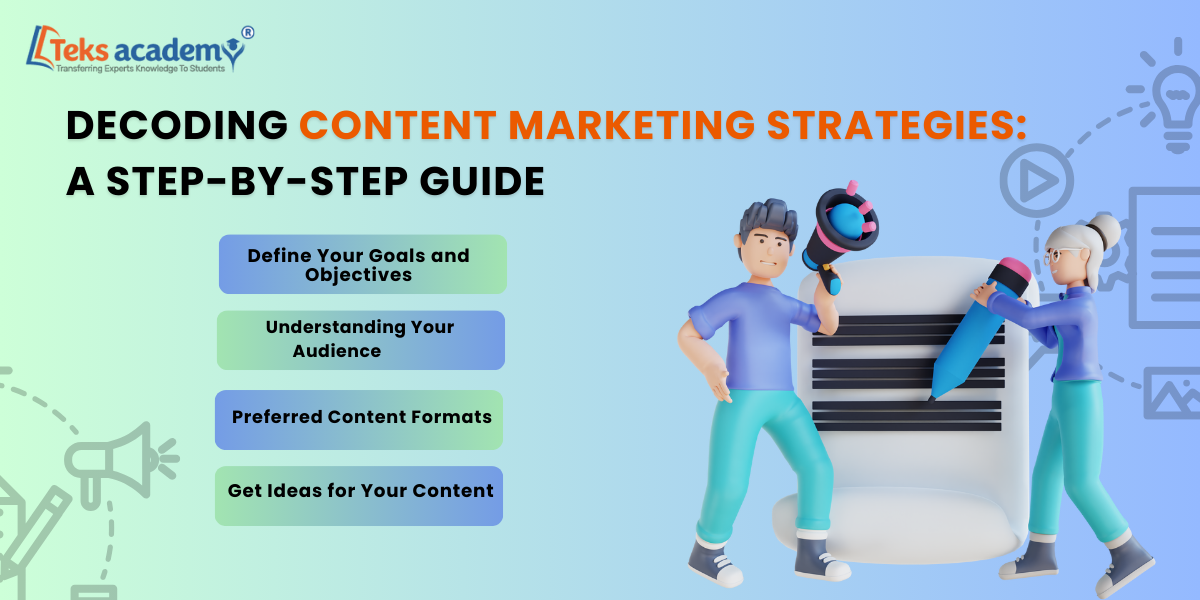

In today’s marketing landscape, content is king. It’s not just about producing content; it’s about creating content that truly resonates with your audience, driving traffic, engagement, and conversions. To navigate this competitive digital world successfully, you need more than just luck; you need a well-crafted content strategy that sets you apart.
This blog guides you in crafting the perfect content strategy to propel you to success. We’ll cover everything from understanding your audience to creating compelling, helpful content. So, let’s not waste any time; let’s start this journey together and unlock the secrets to becoming a content master.
Source: Pinterest
Content marketing is crucial in the business world. It helps business to engage with targeted audience, through content brand trust, brand awareness, online company Prescence will increase, and it leads to sales and business growth.
Source: Pinterest
Content marketing is a strategic approach focused on creating and distributing valuable content to attract and retain a target audience. Through various formats like blogs, videos, and social media posts, it aims to provide value, build trust, and drive profitable customer action.
Before diving into content creation, take the time to clearly define your goals and objectives. Are you looking to increase brand awareness, generate leads, drive website traffic, or boost sales? By understanding what you want to achieve, you can tailor your content strategy to align with your overarching business objectives.
At the heart of any successful content marketing strategy lies a deep understanding of your target audience. By knowing their demographics, interests, pain points, and preferences, you can create content that resonates with them on a personal level. Conducting market research, analyzing customer data, and engaging with your audience through surveys and feedback channels are invaluable in gaining insights into what motivates and influences them.
Source: Pinterest
Now, let’s explore some common content formats and their strengths:
Blog Posts: Blog posts are a versatile format that allows for in-depth exploration of topics. They’re great for providing detailed information and establishing thought leadership in your industry.
Videos: Videos are highly engaging and can help bring your message to life. They’re perfect for demonstrating products or processes, telling stories, and connecting with your audience on a personal level.
Podcasts: Podcasts are an excellent format for reaching audiences on the go. They’re perfect for sharing interviews, hosting discussions, and providing educational content that listeners can consume while multitasking.
Infographics: Infographics are visual representations of information, making complex data easy to understand. They’re perfect for sharing statistics, processes, and comparisons in a visually appealing format.
Social Media Posts: Social media posts are short, snappy, and perfect for grabbing your audience’s attention. They’re great for sharing quick updates, behind-the-scenes content, and engaging with your audience in real-time.
Now, it’s time to figure out what you’re going to write about.
✔ If you’re doing blog posts, you want to pick topics that lots of people are searching for. This way, your posts can show up in Google searches and bring visitors to your site.
✔ To find topics, you can use a tool called Semrush’s Keyword Magic Tool.
✔ Just type in a general word related to what you want to write about and hit “Search.
✔ Then, go to the “Questions” section. Here, you’ll see topics suggested as questions that people are asking.
✔ Each topic comes with info about how many people are searching for it and how hard it is to rank for it on Google.
✔ For making YouTube videos, you can use the Keyword Analytics for YouTube app.
✔ Enter a broad word related to your video topic, and hit “Search.
✔ You’ll see a bunch of ideas for videos.
✔ And on the side, you’ll see the top videos on that topic. This can give you a good idea of what’s popular and help you make content that people want to watch.
Integrating SEO into your content is crucial for enhancing its visibility and attracting organic traffic. Here are some key strategies:
Now that you’ve organized your content ideas, it’s time to bring structure to your content strategy through a content calendar.
A content calendar serves as a central document for planning, coordinating, and executing your content strategy effectively. It encompasses crucial details of your upcoming content, including:
– Topic and title
– Responsible team member
– Content type
– Status (e.g., writing, recording, editing)
– Due date
By consolidating this information in one place, a content calendar provides clarity and direction, ensuring consistency in your content publishing efforts. It serves as a roadmap, keeping your team aligned with your content goals and deadlines.
Additionally, it’s essential to define roles and responsibilities for each team member involved in the content creation process. Clear delineation of tasks helps streamline workflow and prevents confusion or overlap.
When it comes to creating a content calendar, simplicity is key. You can utilize readily available tools like Google Sheets for a straightforward approach. Alternatively, if you require more advanced features and collaboration capabilities, platforms such as Trello, Asana, or Basecamp offer comprehensive solutions to meet your needs. Choose the tool that best suits your team’s workflow and preferences, ensuring seamless coordination and execution of your content strategy.
In the fast-changing world of digital marketing, being flexible and ready to change is super important. Pay attention to new trends, tech, and how people act online, and be ready to switch up your plan. Try out new ways to share content, like different social media platforms or types of posts, and don’t be afraid to learn from what works and what doesn’t. Being able to change and adapt helps you stay on top and keep your content marketing efforts working well, even as things keep evolving.